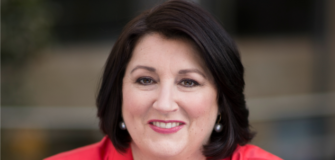Many companies have strong CSR programs backed up by a good budget, but when it comes to asking their employees to become involved, they get nervous.
They want to avoid making their staff members feel uncomfortable and pressured – something that is blamed on charities time and time again.
The inherent expectation of charitable giving among friends, family and colleagues is almost tied to an age gone by (the word “charity” itself originates from the Latin term caritas, introduced into English to mean benevolence for the poor, which neatly ties to Christian values and traditions). But with the average Australian donor part of an aging population, has the widespread practice of charitable giving been sidelined as outdated?
Charities continue to stretch the boundaries when it comes to sharp fundraising strategies. Using the latest principles of consumer behaviour, acquisition and retention plus the latest mass-marketing techniques, they are commercialising standards and falling into strife as the supply of dollars dwindles and the practice of giving fades.
It is ironic that with a worthy cause and good intention, charities using more sophisticated and commercial tactics to try to build their relevance to younger donors are actually pushing them away. At times they even push the sector’s wider reputation into the firing line.
Untapped funds
However, market research by Good2Give, 2015 Workplace Givers Revealed, brings some heart-warming news.
While building Good2Give’s evidence base to help companies better understand their employees when it comes to giving, and how they can engage and appeal to a younger donor, we have found there is a complete and utter generosity to give – and a willingness to give more. In fact, millions of dollars worth of funds remain untapped by employers and Australian charities.
That is lucky, because there continues to be a significant need for this support in our sector. The role of charities and funding avenues like institutions are constantly being debated and under review, but are other organisations better suited to serve the community? Are there better ways to generate funds that don’t involve donor pockets? Is there better regulation to apply? These are important conversations for the sector.
When all is said and done, if we want a civil society that is not solely funded by the government, it’s going to involve our pockets. If we want services and programs with a local community flavour that can respond flexibly to our changing needs, it’s going to involve our pockets. If we want services for the most vulnerable members of the community, where principle is more important than profit, then again, it’s going to involve our pockets.
The charity sector continues to be widely described as our social fabric, or as Tim Costello says, the glue to our society. From local arts groups, community centres, blankets and shelter in times of crisis and emergency, the sector is owned by the community and driven by purpose, not profit.
If we want this as a society, we need to claim it. We need to re-own it and not leave it to the government to fund, and not leave it to company services to replace.
Spreads happiness
Studies consistently show that giving, even financially, makes us happier. Giving directly increases employee pride and satisfaction when supported through the workplace, and our data has found that nearly half of our workplace givers are willing to increase their donation if asked.
It is not that charitable giving is going out of fashion, it’s that our fundraising and supporter models are. It’s leaving us with doubt and apprehension. People want that charity relationship, and are more than willing to invest in it with their money, just as we’re willing to invest in our friends, give them our time and buy them a meal. We just don’t want to feel exploited and manipulated when we do so.
We can change this. We can communicate sincerely with our own staff, and not outsource work to professional street fundraisers. We can share our strategy and rationale, rather than limiting the conversation to immediate community impact. We can educate and open the public dialogue to include our supporters in work and thought development. Most of all, we can genuinely ask for support, and not feel afraid to shout out when we need to do so.
Let’s stop giving companies a reason to be nervous about promoting great giving services and opportunities through the workplace. Let’s stop feeling uncomfortable about contacting our supporters. And let’s stop feeling nervous about asking colleagues, friends and families to donate on an issue close to our heart.
Lisa Grinham is the CEO of Good2Give.
This article originally appeared in the August edition of Third Sector print magazine- subscribe here.
Lisa is regarded as one of the most respected experts in corporate community investment in Australia. She was appointed as CEO of Good2Give in 2012 and has transformed the organisation to be a digital innovator and integrated service provider for many of Australia and New Zealand’s largest companies delivering $20 million annually to charities. Prior to taking the helm at Good2Give, Lisa worked in leadership roles with 3M, Optus and Aussie Home Loans as well as running her own strategic consulting business. Lisa is currently on the board of the International Women’s Forum (IWF) Australia, is a board director of ShareGift Australia and was the Chair and/or a Director of Daystar Foundation from 2006-19.






















































































































































